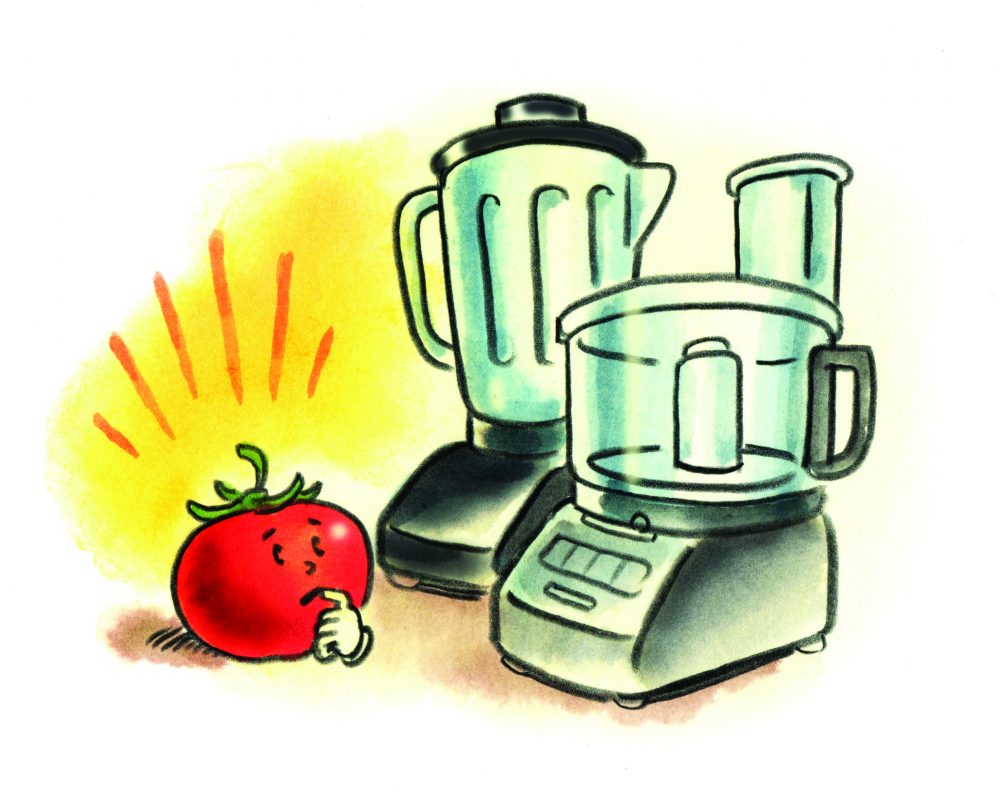Food processors and blenders often serve similar functions in the kitchen. Which prompted Colin Knight, of Miami, to ask how to know when to use one or the other. And do you really need both?
Blenders and food processors both rely on spinning blades to break down ingredients. But the design of the container changes how those blades interact with food. The tall, tapered jar of a blender creates a vortex effect ideal for liquefying, making blenders best for producing velvety-smooth sauces, soups and purees. Meanwhile, the squat bowl of a food processor is best for shredding foods without pulverizing them, perfect for chopping nuts, making chunky sauces or even kneading doughs. To see whether we truly needed both, we ran several tests.
First, we made smoothies. The blender smoothie was, well, smoother, whereas the food processor’s was thicker and kept a frosty consistency longer. With a salsa fresca, the food processor chopped vegetables far more uniformly, while the blender blitzed them into mush. And with pesto, we found that the food processor edged out the blender, producing a thicker, more pleasing pesto than the blender’s thinner, more liquefied version.
Ultimately, the choice between the two mainly comes down to one’s cooking habits. Those wishing to make smoothies, soups or blended drinks should spring for the blender. But for heavy chopping or pastry making, a food processor is better.
Both have a valuable place at Milk Street, but if forced to choose, we’d opt for the food processor. After all, you can make a frozen margarita in a food processor, but you can’t make pie dough in a blender.
Join the conversation on Facebook, Twitter, Instagram and Pinterest.




